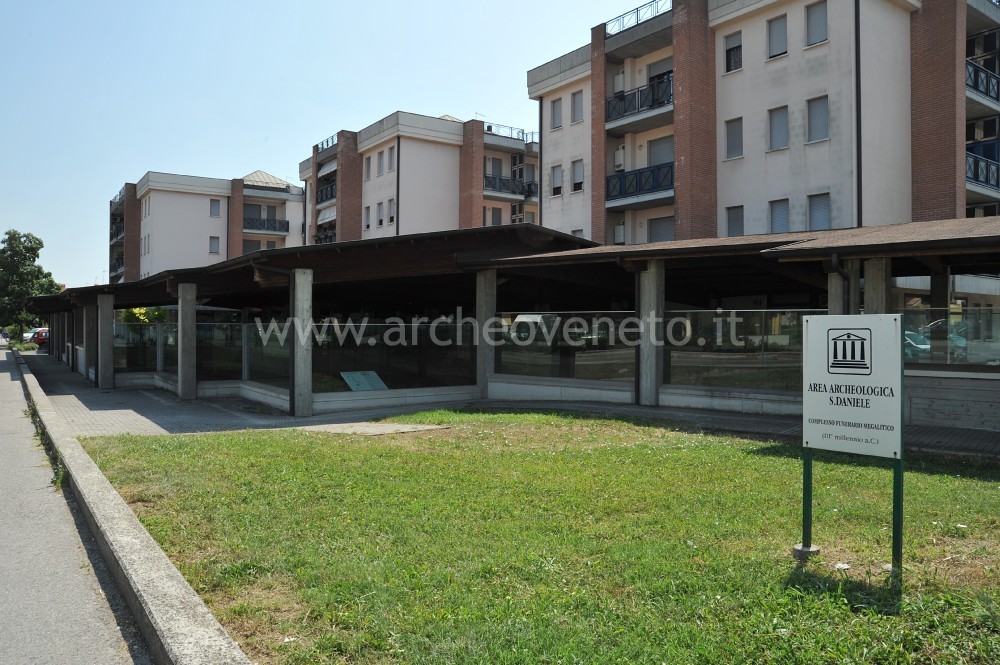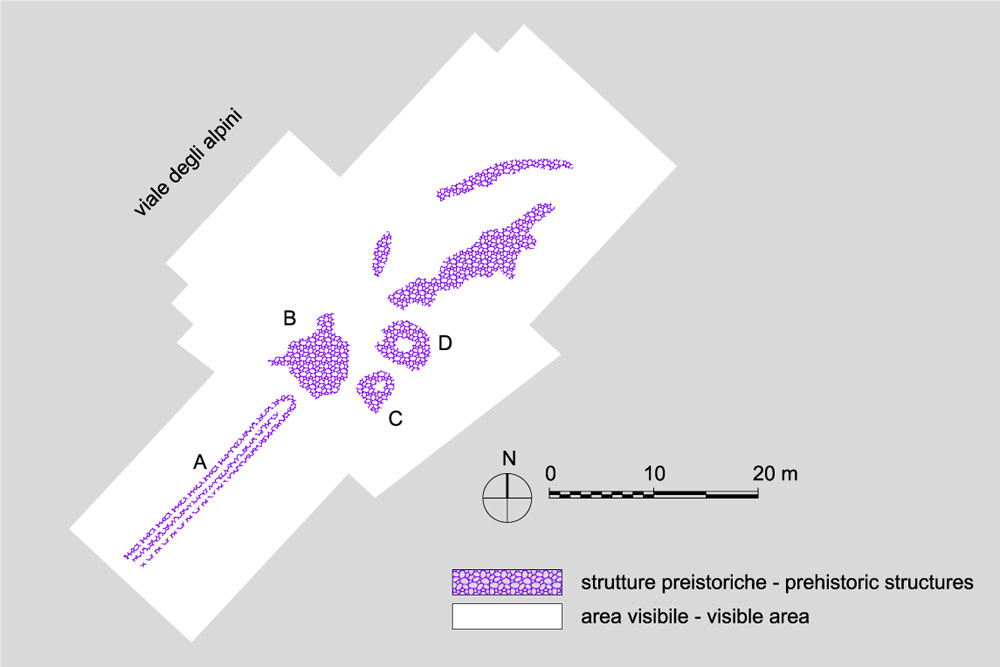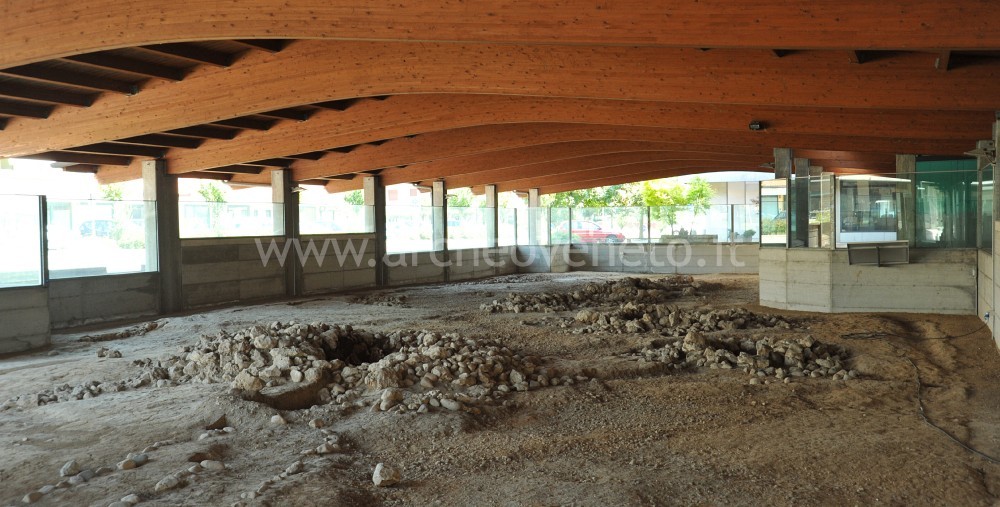| Viale degli Alpini, at the corner with Via Alfieri - 36050 Sovizzo (VI)
|
|
|
Summary
The archaeological site at Sovizzo is a religious and funerary complex of the Copper age. The site comprises three stone cairns (big, medium and small) preceded by a stone corridor. The corridor is also made of stone; it has an apse and it is divided in two by a further central row of stones. Three cairns have been excavated and have allowed the recovery of two burials: one of a two or three years old child, the others of young persons. The complex ends with scattered pebbles and stones where pottery fragments, stone tools and flint manufacture wastes have also been found.History of research
The recovery of the archaeological area in the locality of “San Daniele” dates back to the Nineties and occurred on the occasion of the construction of private buildings by the municipality of Sovizzo. The preliminary investigations (1990-1991) were initially carried out on the whole residential zoning (95000 squared metres). After the recovery of the first structures of the site the investigations continued discontinuously between 1991 and 1994.
Urban and geographical context
Sovizzo is located 10 km west of Vicenza, on the south-easternmost part of the Lessinian mountains.
Chronology
End of IV – beginning of III millennium B.C. (3300 – 2900 B.C.) |
 |  |
|
Visiting
Visitability: Esterno;
Ticket: No;
 School access School access
|
Recommended tour time (minutes): 60 |
|
Services for visitors
|
Educational Services
 Information boards Information boards Multilingual ads: Inglese Multilingual ads: Inglese |
Bibliography
| Veneto e Friuli-Venezia Giulia (Guide Archeologiche Preistoria e Protostoria in Italia) 1996, a cura di Aspes A., Fasani L., Forlì, pp. 142-149. |
| Bianchin Citton E. 1998, Il complesso funerario-cultuale di tipo megalitico dell'età del rame di Sovizzo - Località San Daniele, in Quaderni di Archeologia del Veneto, XIV, pp. 163-164. |
| L'area funeraria e cultuale dell'età del Rame di Sovizzo nel contesto archeologico dell'Italia Settentrionale 2004, a cura di E. Bianchin Citton , Vicenza. |
| I luoghi della cultura 2006, Roma, pp. 387. |
| Bonetto J. 2009, Veneto (Archeologia delle Regioni d'Italia), Roma, pp. 472-474. |
